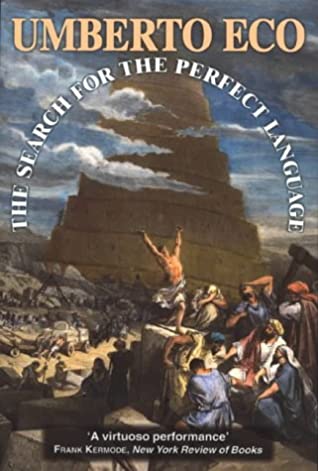Reading D.G. Leahy's writing is to me an experience that feels like reading Isaiah. It is obviously densely packed with meaning, but so inscrutable, it's like reading hieroglyphs must have been before the Rosetta Stone was found -- glimpses of meaning percolate up through the text in iridiscent bubbles and burst evanescently before the mind which is trying to penetrate to the scrutable layer. And then they fade away.
But I really want to understand! I even said out loud, a few minutes ago while attempting to crack the walnut of D. G. Leahy's writing: "I really want to understand this!" and yet I cannot; it's way over my head. In fact, that's when I realized it's like reading Isaiah, where I have the same yearning. I really want to understand, but alas, have not yet put enough diligence into the matter to get as deep as the writer intends. It struck me as soon I said those words that I really want to understand Leahy so that I can translate him for the ordinary person. Thus, at the yearning level, I'm driven to understand inscrutable things because I want to make them scrutable. I suppose there is something telling in that, but I just observed it and went on.
Anyway, all that aside, I try to find low-hanging fruit on the tree as a way in to the text, and then use that to triangulate toward the deeper points, slowly etching away over time. Hence I went to a video linked by Leahy on his main page at https://dgleahy.com/begbievideo.htm, but the video is now gone, so I found it on YouTube: The Sense of an Ending. (I linked the video at 2:40, when Begbie begins talking). Watching him speak is kind of like reading a poem; not something you do when you're in a hurry, but more like when you have time to spare, to savor what he's saying.
Intrigued by the comments saying that it gets better toward the ending, I did get through the whole video and agree, the ending is worth the wait, but the part that stood out to me long before the ending was a point he sprinkled here and there throughout the whole talk. When he first mentioned it, he was talking about tension and resolution, and I missed the implicit ternary reference... and then he made it explicit, by talking about resolution as a return to equalibrium. I started following the sprinkles from that point forward.
Tension, Resolution, and Equilibrium
At the center of all stories, all music, all that happens really, is a three-part structure. There is the beginning, which is kind of like a point of equilibrium compared to what happens next. Then there is the tension, a going-away-from-home as Begbie puts it, which feels incomplete until the ending, where everything comes together and there is equilibrium again.
Music is full of this, over and over, and in many layers, with "local endings" embedded within larger structural endings. Great storytellers play with these structures. Some -- and musicians included -- play with this structural idea by intentionally leaving off the ending, thereby leaving the audience in a state of feeling not-entirely-settled... on purpose. But even then the ending, although not explicit, is still there, because it always is, even when we leave it out.
The ending is the equilibrium point which is like the beginning. Begbie goes into great and delightful detail making this point, so I'll defer to his talk for those who want that level of detail. He refers to the information in between musical notes as being the place where God operates. Since this in-between-notes is the main point of a small poem my brother wrote a few years ago (and which I just wrote about), it caught my attention.
Begbie develops this idea, of the deeper, more heavenly, music embedded between the notes -- and within silence -- to a delightful crescendo with a conclusion that is appropriate for a talk called The Sense of an Ending. It's worth watching, but because no one else in the comments did, I'll give away the best part of the ending: he carefully describes the example of a large orchestral experiment he managed for dozens of musicians one evening. Quite a large affair, with lots of moving parts and some new ideas for everyone. At one point in the evening, he gave many of the musicians a chance to innovate, to each be like Beethoven for a few minutes. He gave them some boundaries but encouraged them to express themselves, with their own unique voice.
At this point in the narrative, Begbie pointed out that, for some kinds of musicians, this is extremely unusual -- they have all learned to play precisely what is in front of them as part of a larger group and surprisingly never get the chance or any training in how to express their individuality. Thus, given the chance to do so, one young woman experienced something so personally wonderful that she then and there entered a faith-based relationship with God. Apparently, several others did also. At this point in the narrative, Begbie then took this "ability to individually innovate" and how transformative it can be into a reference to the Holy Ghost, and how God works in our lives to make each of us individually beautiful -- quite unlike the competitive homogeneity commonly taught in our churches today.
The point was well-made, and what came through is the strength of the effect upon the soul of what exists "between the notes" of music, and its relationship with God (or maybe we could say it is God). Once we make a connection to what exists between the notes, we've made a connection to that eternal, heavenly, equilibrium which governs all simultaneously -- and very dynamically; it's easy to imagine the give-and-take of a local connection (the individual with God) being influenced by some other local connection (another individual's will or actions) to God, and both of these playing a part in a global dynamic.
Equilibrium is the beginning and ending
 Although it's clearly there right in the dictionary definition of equilibrium (see illustration), this aspect of equilibrium is a new one for me: seeing equilibrium specifically as the merger of the beginning and the ending. Begbie clarifies that structurally he's not talking about a circle; the ending is not exactly the beginning. He seems to be structurally implying something more like a spiral, where the ending is not exactly the beginning, but "like" the beginning.
Although it's clearly there right in the dictionary definition of equilibrium (see illustration), this aspect of equilibrium is a new one for me: seeing equilibrium specifically as the merger of the beginning and the ending. Begbie clarifies that structurally he's not talking about a circle; the ending is not exactly the beginning. He seems to be structurally implying something more like a spiral, where the ending is not exactly the beginning, but "like" the beginning.
Hmmm.... thinking about another post I recently wrote, about two infinities merging with zero, and seeing a new angle... This merger of beginning and ending implies to me that the two poles of binary logic are inside-out, not representing the extremes as they seem, but representing the center, but in exaggerated form?... the extremes are the beginning and the ending, which are similar, whereas the center is the part that's different, where "tension" is happening...?
Thinking out loud here.
 I'm trying to map this structure to a sphere, but... that is more static than I want, I need something moving, something dynamic, where energy flows.
I'm trying to map this structure to a sphere, but... that is more static than I want, I need something moving, something dynamic, where energy flows.
I think I'll try to map it onto the spiral of the new synarché symbol...
Hmmm.... musing further... something larger than I realized is underway. I'm seeing how nearly everything I've been writing, reading, and thinking over the past few weeks is related in ways I hadn't noticed before. I keep seeing glimpses of this deeper theme, similar to what I was describing in my starting paragraphs above, evanescent bubbles. This is a rare moment, usually happens on a small, local scale, but is happening over a period of weeks -- months, really although not as continually over that timespan as the past few weeks, and very gently, so gently it's taken me weeks to realize that this is happening. 
Wait... What if we turn the new synarché symbol on its side, like this? Immediately what came to mind when I did this was the Hebrew letter shin ( ). And lo, a quick search shows that it (synchronously/
). And lo, a quick search shows that it (synchronously/ ) as Greek ksi or xsi (
) as Greek ksi or xsi (
Aha!
This rotation by 90 degrees is a perfectly legal maneuver within the context of mathematical-symbol-making, and would neatly solve the overlap problem, of the Greek xsi ( ) already being used by mathematicians for random variables. This was a small niggle I encountered when identifying the word synarché a few days ago. Doing so would draw out the Hebrew connection and thereby link nicely to Cantor's choice of Hebrew aleph (
) already being used by mathematicians for random variables. This was a small niggle I encountered when identifying the word synarché a few days ago. Doing so would draw out the Hebrew connection and thereby link nicely to Cantor's choice of Hebrew aleph ( ) to describe infinities.
) to describe infinities.
A brief detour into the four-headed shin
 This sideways version also hints at the legendary four-headed-shin, a variant of the normal shin whose "hidden meaning" is prophesied to appear some day as a unifying insight having to do with world peace.
This sideways version also hints at the legendary four-headed-shin, a variant of the normal shin whose "hidden meaning" is prophesied to appear some day as a unifying insight having to do with world peace.
The four-headed-shin is often said to contain a normal three-headed-shin ( ) inside of it, upside down. Take a look at the four-headed shin (see illustration), and you can see in the "three white spaces" between the four heads, exists an upside-down shin. Together, the visible and invisible shin combine for a total of 7.
) inside of it, upside down. Take a look at the four-headed shin (see illustration), and you can see in the "three white spaces" between the four heads, exists an upside-down shin. Together, the visible and invisible shin combine for a total of 7.
For the most part, I'll spare you the rabbithole I just went into while looking into the four-headed-shin (again), but the article I just linked is a completely relevant reference to what we're talking about here... and to the poem my brother wrote, as well as what Begbie was saying, as well as the research paper from the Army Intelligence Command, as well as the dawning realization I described a few paragraphs ago... 
Still banging on about unity with everything everywhere
I thought I was done once I created the synarché symbol and name, but apparently I am still in the middle of creating this neologism which captures the essence of all this "unity-with-the-beginning-of-all" which is meant to replace our current idea of infinity where it blends into a certain... em, all-connecting... dimension.
Basically, the idea is that "grace" is the unifying "space between the notes" of music and the space between mathematical points (on, say, the real line), and it is the place of "rest into which infinity blends." It is also apparently the "moment of personal innovation which is so wonderful it causes one to believe in God" which Begbie refers to at the end of his talk. It is where positive infinity and negative infinity and zero all become one... and where all three of these together become one and touch the world of physics from within mathematics.... (or where the world of mathematics touches physics, however you want to see it).
That is what this new symbol is intended to represent. All these references are to the same thing, the "with-beginning" that is simultaneously the opposite of "without-end" of "in-finity" and the much larger "superinfinity" which encompasses all infinities into a singularity that is everywhere.

So I'm back, working on this little essay, after having slept and thought about things more. I now think the synarché name I coined a few days ago might be better called "shinarché" both because it's closer to the original pronunciation of Greek " " (actually a "xshunarché") and because it simultaneously references the Hebrew shin.
" (actually a "xshunarché") and because it simultaneously references the Hebrew shin.
In other words, for those who missed my previous essay in this sprawling series, I am now a fan of the rotated form which brings shin into the game. However, rotating it might make it harder for others to use. In other words, it's pretty easy to find the HTML entity for xsi ( ); it will be much more difficult to propogate an entirely new character for which a new HTML entity needs to be created. This could be addressed by simply using the Hebrew shin and calling it "shinarché" when it's being used to refer to the mathematical object (i.e. the point at the center of the rotated Riemann Sphere, where both infinities of the real line merge with zero.)
); it will be much more difficult to propogate an entirely new character for which a new HTML entity needs to be created. This could be addressed by simply using the Hebrew shin and calling it "shinarché" when it's being used to refer to the mathematical object (i.e. the point at the center of the rotated Riemann Sphere, where both infinities of the real line merge with zero.)
And... there it is. It's that tension that always plays through such neologisms. There is that layer of what already exists which resists the arrival of what is new. What is new must arrive gradually, abiding by the principle "Natura non facit saltus" (nature makes no leaps), or else there is just too much resistance, and in one way or another, the tension ends poorly and the new is rejected. We want the new to bring us into equilibrium, not destabilize us. There is one more element that has been appearing, like one of those iridescent bubbles mentioned at the start of this essay, arriving and fading, over the past couple weeks, which I haven't mentioned yet. It has to do with the element of "time." Time is somehow involved. I earlier talked about how Random, Oneness, and Infinity were all the same thing, and I now think Time is part of the formula, maybe not within the essential oneness (since time contains a hard reference to finity, similar to the problem with the word in-finite discussed elsewhere), but perhaps embedded in the symbol we use to talk about that essential oneness. Like, say, the new shinarché symbol. Intuition keeps telling me there is a reference to time somehow involved, but I don't know where it fits yet.
So having said that, I'm going to go grocery shopping and other mundane things, and will return to this essay as soon as I can, having thought about it more. Here, before I go, I'll leave my squiggle which indicates the passage of time:

 In the time that passed, a remarkable experience came about. I hope I can capture it briefly. I've been reading Umberto Eco's Search for the Perfect Language. As soon as I found it a few months ago I knew it was a long-sought treasure. I did something I never do with a book: I printed it out as a PDF because I knew I was going to read it very closely and make lots of notes in the margins. I never write in the margins! For many years I never took notes at all, but lately I've learned to take photos of particularly good passages which I know I will want to refer to in the future. But to take a pen and mark up the pages of a book? Not my style. But this was no ordinary book -- this is a masterpiece overlapping so much of my own research interests, by a true legend in the field.
In the time that passed, a remarkable experience came about. I hope I can capture it briefly. I've been reading Umberto Eco's Search for the Perfect Language. As soon as I found it a few months ago I knew it was a long-sought treasure. I did something I never do with a book: I printed it out as a PDF because I knew I was going to read it very closely and make lots of notes in the margins. I never write in the margins! For many years I never took notes at all, but lately I've learned to take photos of particularly good passages which I know I will want to refer to in the future. But to take a pen and mark up the pages of a book? Not my style. But this was no ordinary book -- this is a masterpiece overlapping so much of my own research interests, by a true legend in the field.
I printed the entire book, four-up, as we call it, four pages on a single 8.5x11 page so I didn't use so much paper. And for months, I've been reading slowly, savoring, really treasuring this book, and writing notes in the margins. It is exquisitely researched and written by someone who truly loves the subject -- the search for the perfect langauge -- as it has historically played out over the millennia.
I stumbled across the book when I was in a deep-dive into the Characteristica Universalis of Leibniz, and I've really been enjoying spending an hour here and there, reading. Hadn't touched it for a couple months, though, and today (well, it's past midnight, so, yesterday) I had some time to spare and I began reading. Oh wow, the gem I found is so precious!
You see, I've imagined doing the research and writing this complex, layered, analysis of how binary logic works on a structural level for many years. I'm always intimidated by my own thoughts in this area because it's truly a difficult chore. But today I discovered Umberto Eco already did the hard work! He was analysing the attempt at a perfect language created by John Wilkins and the Royal Society in the 1600s, and his narrative so precisely captured -- as a great example -- all of the main problems with using binary logic which I have gathered over the years.
As I read I kept getting more and more excited because it seemed at first to be a rather tedious analysis of a (yet another) failed attempt at a perfect language, dry and boring, but covered in scholarly, but also tedious, detail for the sake of being comprehensive to the topic... but it just kept turning up these insights which paralleled my own insights into the problems of over-relying on binary logic (which our whole civilization does, profoundly).
It turns out, a couple of the large, well-researched experiments with philosophical languages in the 1600s were remarkable examples of how NOT to design a perfect language, but even more remarkable examples of the madness that comes about when attempting to systemetize knowledge using a categorical, excluded-middle, binary-logic manner of organizing information.
I believe heading in this direction always inevitably leads to... well.... Babylon. It's what I call Babylonian thinking, not meaning "Babylonian" the language, but babble-on, the confusion. It's now perfectly clear that when God removed something from language during the famous incident while building the Tower of Babel, what He removed was the third pole of ternary logic. I thought the Greeks invented this, but it's now obvious that the root cause so closely parallels God's response to Nimrod's attempt to reach heaven, that I feel certain I will be able to find how this problem with binary logic originated in Babylon and migrated to ancient Greece, from where it played such a significant role in the foundation of Western Civilization.
It is plain to me: People stopped being able to understand each other because that third pole was removed, leaving binary logic in its place. That thinking error has propogated and developed century after century ever after, until we have arrived at today -- the crown achievement of binary logic is the condition of the world today. All of its beauty and power are visible, from the ghastly imperial march of Manifest Destiny to all of its other about-to-collapse-profoundly-and-forever flaws (imagine a Microsoft Windows Blue Screen of Death complete-failure-requiring-reboot happening on a global, historical, scale affecting all of Western Civilization and probably Eastern as well) are visible for any who have eyes to see.
So now instead of doing all the hard work of developing a large, sophisticated example by which to analyize the systematic flaws that can arise from over-applying binary logic, I can simply point people to Umberto Eco, as he methodically shows how you can fail in a grand style at the project of creating a perfect language (which is a ternary endeavor) using a binary logic approach.
If that were not enough, it gets better.
First Eco gives an example of George Dalgarno, whose attempt at a perfect language was a good start, but clearly amateurish compared to the next attempt, by John Wilkins (they knew each other). It was the enormous and carefully-thought-out effort that Wilkins put into his project which made Eco's analysis so rich in examples of how NOT to design a perfect language. That discovery alone would have been enough, answering a long-sought dream of mine so beautifully I will be thanking God for this gift for a long time yet to come. So much work is already done, because of how Eco's writing is both authoritative and can be put to good use making a very complex and difficult point.
But it's what came next that took the whole experience to another level: I have not been able to dig in to this next insight as deeply, but I'm certain I see something very clearly in the "perfect language" of the next writer Eco analyzed. It appears that Francis Lodwick was historically a predecessor to Dalgarno and Wilkins, but in Eco's book his experiment with the primary categories of a new language appears after theirs. I'm guessing Eco included his perfect language out of historical order because, by doing so, he was able to set a stage by which to compare Lodwick's writing. Having set that stage, he did the comparison quickly and efficiently by referring to Wilkins, where he spent a lot more time. This he did because Wilkin's attempt was so much larger and more comprehensively designed (even though failed from inception because of the excluded-middle confusion).
However, Lodwick appears to be a greater gem, as he made a more accurate attempt at designing a perfect language than Dalgarno or Wilkins, likely because he started with verbs instead of nouns.
Oh good heavens, I've gotten so far afield of my original topic in this little essay -- I'm no longer talking about the Sense of an Ending, nor equilibrium. Before I get into why verbs are a better starting place than nouns, I really need to draw this little essay to a close and start a new one talking about this new subject.

What is happening is so remarkable I've gone from writing small occasional essays on this subject (every year or two) to something every few months, to something every few weeks, then days, and lately, a nearly-continual stream of words -- all while a fairly ordinary life is also happening (that's part of the story! ordinary is important!).
This is much larger than me, and I'm as excited about what comes next as you are, or should be. But I must conclude for now, even if only because it's 4:00 a.m. and the ordinary world calls. I wanted to end this present essay, which started out talking about a Sense of Ending, with a decent ending -- same as Begbie did. You know, for the poetry's sake. But... the Sense of Ending toward which I find myself pointed is above my paygrade right now.
Which leaves me with this as my ending. What, come back and give this a proper ending when it arrives, according to the will of The Arche for which I'm playing amanuensis? Maybe. Or maybe just leave this in its raw form, cuz by tomorrow I will be off writing about something completely different yet somehow deeply related, as the Sense of Ending which makes sense of all this, arrives, bringing The Original Equilibrium.
